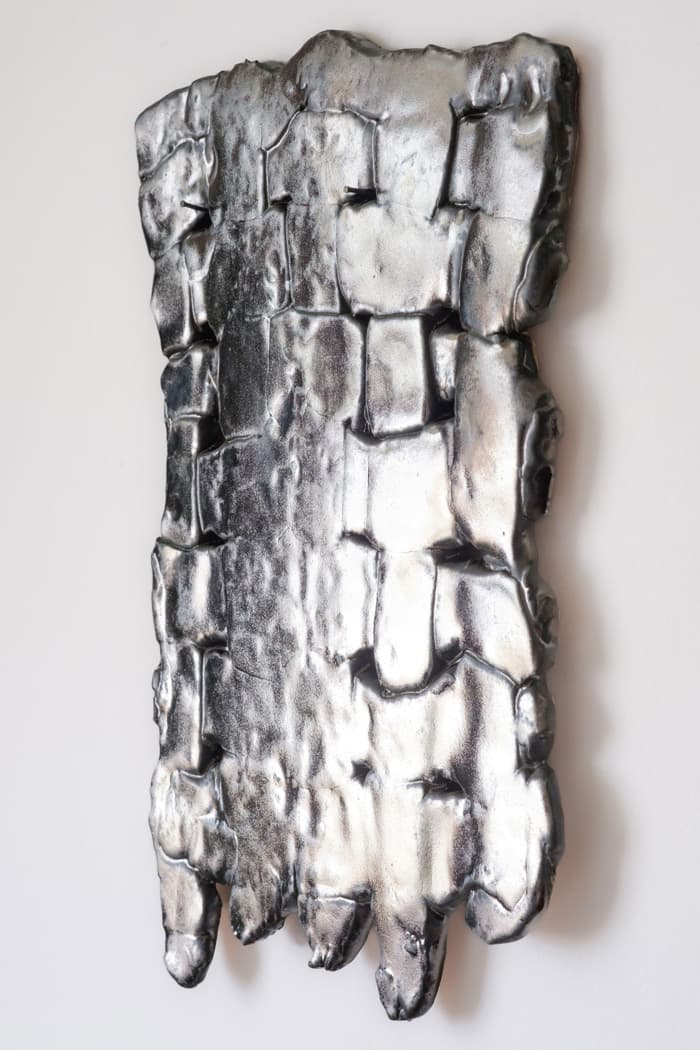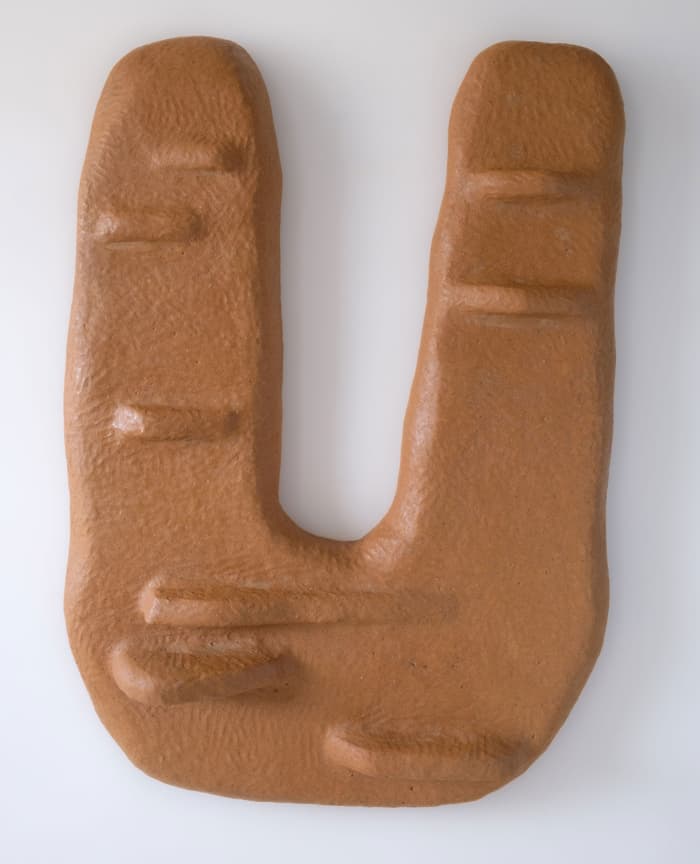Published July 29, 2022
Studio Spotlight: Brit Krohmer

Brit Krohmer is a Milwaukee-based interdisciplinary artist and educator. Krohmer received her MFA from University of Illinois Urbana-Champaign in 2017. Recent solo exhibitions include The Shed Gallery in New Orleans, Louisiana. Recent group exhibitions include Real Tinsel, in Milwaukee, Wisconsin, Woman Made Gallery, in Chicago, Illinois and The Front, in New Orleans, Louisiana.
What type of work do you create and what motivates you to make it?
BK: My motivation often comes from trying to understand what it is to be a human– trying to understand the things that we struggle to articulate. It has been a way to ask the universe all the things that I can’t truly understand, but I find myself with more questions instead of getting answers.
Can you describe your process? What skills and techniques do you use?
BK: As a child, my grandfather would fill my front porch with boxes of auction extras- costume jewelry, greasy tractor parts, and McDonald's toys still in their packages. I loved the dig- pulling out, pairing up, how the objects could hold power or share their previous lives, seeing the old with the new, the aged plastic, the smell, the vernacular of a rural Midwest. I began to understand something about human nature through these boxes instinctually. This activity is the foundation of my studio practice- mining objects, pairing, and giving them new relationships and meaning.
I utilize the skills that I have acquired working odd jobs in my adult life, mostly alongside my father. Major home renovations, historic preservation projects, roofing, painting- these skill sets constantly enter my work.
After years of creating DIY clays in the studio, I started working in ceramics. I had been longing for ceramics and didn’t even understand it until I spent 5-weeks at a residency at Nut Shell Forest Farm, where I had the space and time to work in clay. It’s a small, woman-owned farm outside of Hillsboro, Oregon. It was a truly magical experience- I haven’t stopped since.
What is your favorite part of the creative process?
BK: The moments when I’m making, and my brain is completely clear. I love working with new material where I have minimal knowledge. Being able to experiment without expectation or understanding allows me to truly push the limitations of a material.
How do you consider display and installation when creating your work?
BK: I tend to be playful and dramatic, and I see it most reflected in my work, especially when considering display. For example, in my recent show in New Orleans at The Shed Gallery, I showed 44 ceramic pieces charged by the sunlight and glowed in the dark at night- that felt like a theatrical gesture. The ceramics have a glow-in-the-dark powder coating.
After working at the Milwaukee Art Museum as a preparator, I started to consider display and how it can alter how the viewer experiences the work in a public space. When these large sculptural objects enter the home, I hope the collector adorns them with objects that bring them joy and see this as a collaboration between us.

How do you overcome creative blocks?
BK: I don’t know if there is such a thing. I think that is the thing Julia Cameron gets right in The Artist’s Way when she states,
“Art is an image-using system. In order to create, we draw from our inner well. This inner well, an artistic reservoir, is ideally like a well-stocked trout pond. We’ve got big fish, little fish, fat fish, skinny fish—an abundance of artistic fish to fry. As artists, we must realize that we have to maintain this artistic ecosystem. If we don’t give some attention to upkeep, our well is apt to become depleted, stagnant, or blocked. Any extended period or piece of work draws heavily on our artistic well. Over-tapping the well, like overfishing the pond, leaves us with diminished resources. We fish in vain for the images we require. Our work dries up and we wonder why, 'just when it was going so well.” The truth is that work can dry up because it is going so well.”
If you don’t take the time to stock your “creative” pond regularly, you won’t have anything to consider or reflect on. If you feel blocked, you’ve been sitting in your studio and your mind too much. So, I allow myself the permission to have distance from the studio to acquire new visual information and sensations.
When people interact with your work, how do you hope they respond? Have you had any memorable responses to your work?
BK: When people see my work, I hope they feel welcome and feel that they have access to what I am trying to communicate and at least find something truly beautiful. Isolating a viewer is a great fear of mine.
Terry Gibson, a New Orleans artist, visited my show THE DUST THAT MAKES MUD and offered me a trade for one of these beautiful necklaces made of melted plastic bags, images of pop culture icons, beads, stickers, and glitter. They are unlike anything I’ve ever seen; they are so beautiful. He selected one of my glow-in-the-dark ceramics and felt compelled to pick it up, hold it between his palms, kiss it, and put it in his shoe. It felt incredibly special.
Do you have any studio rituals?
BK: When I arrive at the studio, after I set my things down, I always take the time to reflect on the things that I am grateful for and what a privilege it is to have the space and time to make.
